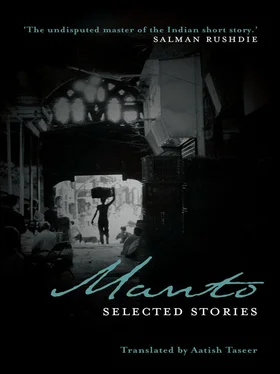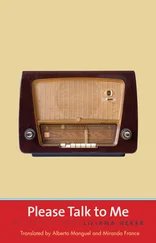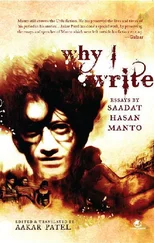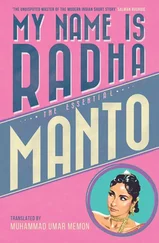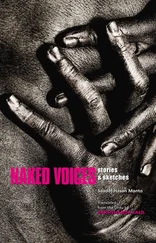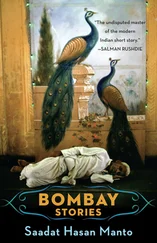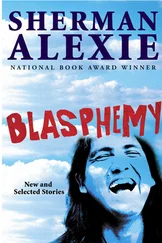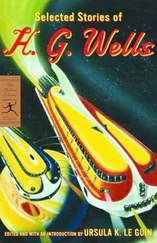This is the climax of ‘Ten Rupees’: the sudden view of the sea; the chill at close of day; and the abandon of a young prostitute who cannot express her situation. Manto, as if relishing what might seem like an anticlimax, bends the narrative around something as ordinary as a ten rupee note, which Sarita accepts in a moment of excitement from one of the boys, but returns at the end of the story. ‘“This… why should I take this money?” she replied and ran off, leaving Kafayat still staring at the limp note.’
When I finished ‘Ten Rupees’, I knew that something about the quality of its detail, and the oblique gaze of the narrator, the story of a chawl and a prostitute told through a girl’s love of cars, had altered my life as a reader. If before, I had read looking for language and rhythms that I liked, I was reading now to understand how a writer like Manto could evoke his world with a single detail; I was reading to see how he engaged his material so that a narrative seemed to spring naturally from it, a narrative that not only didn’t rely on ornate writing and description, but would have been obscured by it. So affecting was the experience that I wondered why I hadn’t grown up reading Manto. The answer, I discovered, was that he wasn’t taught widely in schools; and though his language would easily have been understood by the average north Indian reader, he was locked into Urdu curriculums; Devanagari editions of his stories were hard to come by and English translations of his writing dense and bland; he had either been forgotten in India, or disowned. Feeling I knew why, and feeling also that India had too few writers of his calibre — either with the richness and breadth of his material or the simplicity of his prose — to allow any to leave for Pakistan, I sat down to do the first translation of ‘Ten Rupees’.
At the time, I was forming my first understanding of economy, an understanding to which Manto was to become essential. Just a few weeks earlier, an older writer friend had suggested I read Pushkin, Gandhi and RK Narayan to see what they did. I had begun with Pushkin, reading first The Captain’s Daughter. When, a week or so later, I met the writer again and told him I’d read The Captain’s Daughter , his face brightened and he asked, ‘How does Pushkin describe St Petersburg in The Captain’s Daughter ?’ I went through the story in my head; it was still fresh, but I had no answer for him. I couldn’t recall any description of St Petersburg even though I knew the story’s last scene was set there. I became even more puzzled that evening when I went back to the Pushkin to see how he described St Petersburg: he didn’t. ‘With Pushkin,’ the writer said when we met again, ‘he’ll do one or two things. There’ll be a coat hanging in the room. And the scene is there. No more needs to be said.’
‘A coat hanging in the room. And the scene is there!’ This was also what Manto could do. Like in The Captain’s Daughter , in ‘Ten Rupees’ Bombay is hardly described. There’s a single reference to bazaars clogging with traffic from cars, buses, trams and pedestrians as Sarita and the boys are leaving town, but that is all. Bombay is that factory wall with the stench of urine drifting down its entire stretch. And this quality of detail, seeming to contain an entire milieu in a few lines, runs right through Manto. In ‘Khaled Mian’, the stillness of the night as Mumtaz waits for news of his dying child: ‘It was ten at night. The maidan was dark and silent. Sometimes the horn of a car would graze the silence as it went past. Up ahead, over a high wall, the illuminated hospital clock could be seen.’ In ‘Ram Khilavan’, the austerity of the narrator’s room: ‘It was a tiny room, destitute of even an electric light. There was one table, one chair and one sack-covered cot with a thousand bedbugs.’ In ‘My Name is Radha’, a restaurant where all the movie people came: ‘I’d spend whole days at Gulab’s Hotel, drinking tea. Everyone who came in was either partially or entirely drenched. The flies too, seeking shelter from the rain, collected within. It was squalid beyond words. A squeezed rag for making tea was draped on one chair; on another, lay a foul smelling knife, used for cutting onions, but now idle.’ Though Manto’s economy can be seen in each of these stories, nowhere is it more fully realised than in ‘Ram Khilavan’.
In under ten pages of short sentences, each sprung like a cricket bat, he conveys what feels like an entire lifetime in Bombay. The thread of the story is a relationship between the narrator and his dhobi. When the narrator is poor and living in a ‘tiny room, destitute of even an electric light’, the dhobi, illiterate and warmhearted, overlooks his unpaid bills. The narrator’s fortunes improve, he gets married, moves to a bigger place, the dhobi continues to come. One day the dhobi falls sick with alcohol poisoning and the narrator’s wife takes him in a car to the doctor, and so, saves his life. The dhobi never forgets this kindness. Then Partition happens, the city is inflamed with Hindu — Muslim riots and the narrator decides to leave for Pakistan. On his last evening in Bombay, he goes to the dhobi to pick up his clothes. The curfew hour is approaching and he finds himself surrounded by a murderous mob of drunken dhobis, of whom one is his. The dhobi, in a drunken haze, is about to attack the narrator when he recognises him. The next day, the narrator’s last in Bombay, the dhobi brings the clothes as usual. He is overwhelmed with regret, but is never really able to express himself. A few hours later, the narrator leaves Bombay, never to return. The sense of loss and futility, told through this story of the little people one knew and has now to leave behind, is devastating. So much else is contained in the story’s compass: the nature of Partition violence; the kind of person who fell prey to it; how relationships in a city can change through such violence. The writer seems to be writing from deep within his material so that none of this is added externally, but is part of the fiction’s logic. The economy is not forced or done simply for the sake of economy; it feels necessary, an aspect of the story’s urgency.
Given the extent to which Manto inhabits his material, there is something miraculous, like with Maupassant, whom Manto read and admired, that his range should have been so vast. He wrote about prostitution, religious superstition, adolescent anxiety, sex, the Partition of India and Bombay cinema in the thirties and forties. They were the great themes of his time and though the stories are not forgiving, nor do they falsify the hard realities of India, there is something euphoric in the writing; it is easy to sense the writer’s joy in the newness and variety of life.
Manto investigated these themes, using sometimes a third person narrator, and sometimes, as in ‘Ram Khilavan’, a narrator called Manto. Manto, the narrator, should not be confused with Manto, the man or the writer. He is like the narrators used by Proust and VS Naipaul, and though travelling under the writer’s name, he is, if anything, a more forceful creation of the imagination. Nor are the stories any less a work of fiction than if an omniscient, third person narrator had been used. This kind of narrator is not a gimmick; he serves a distinct purpose. In an immigrant city like Bombay, where no cultural knowledge can be assumed, where the landscape is often foreign and various, Manto, the fictional presence, declares his outsider’s perspective and becomes a kind of guide to the new terrain. He marks out the world; the reader can put himself in his hands; his discoveries become part of the narrative. His gaze, like in ‘Ten Rupees’, is always oblique and a little perverse. The situation of women in society might be dealt with through the anger of an affronted prostitute, an adolescent’s sexual discovery through a satin blouse.
Читать дальше
